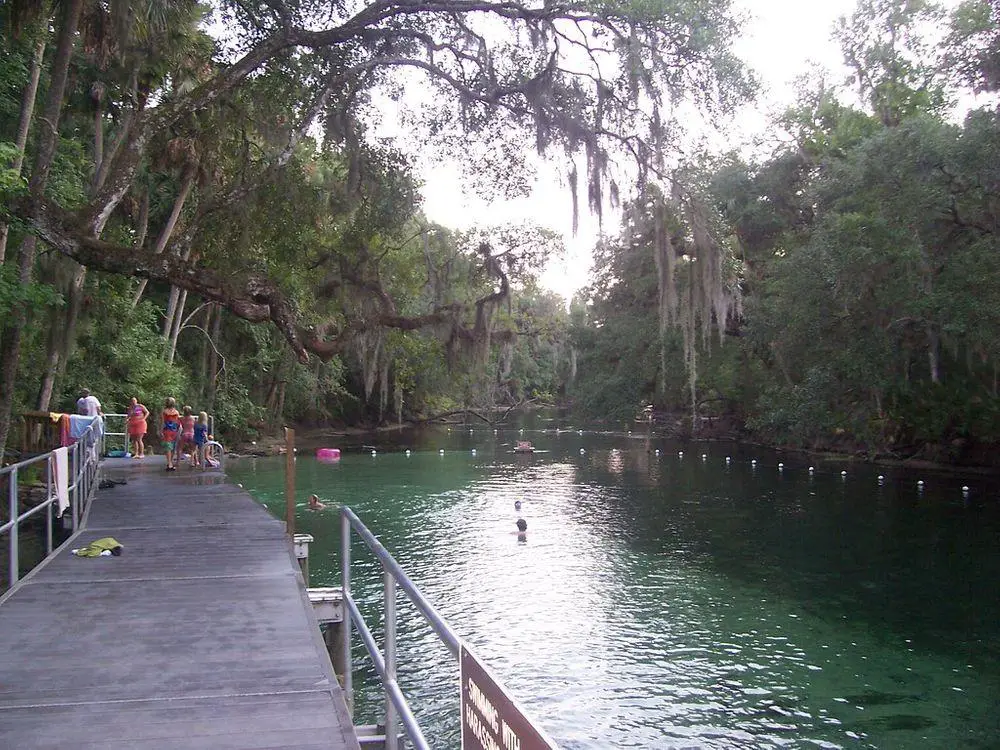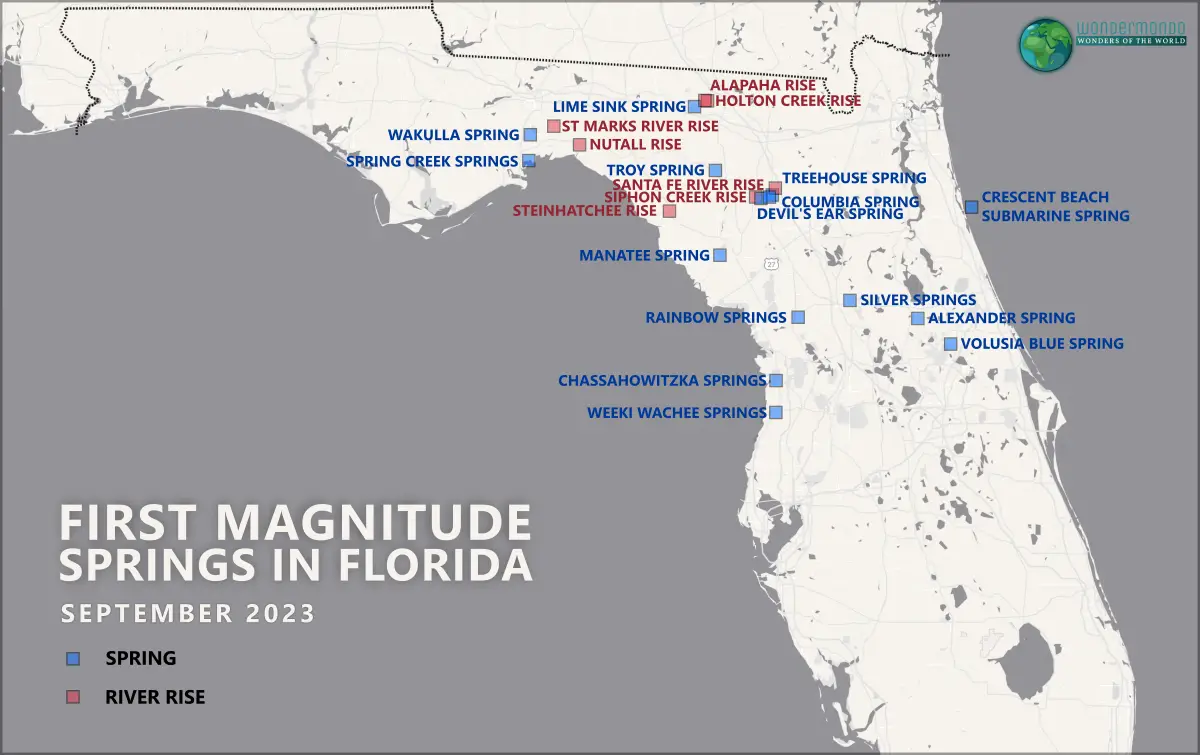World 🢖 North America 🢖 United States 🢖 Florida
Springs 🢔 Geological wonders 🢔 Categories of wonders
Wonder
Volusia Blue Spring
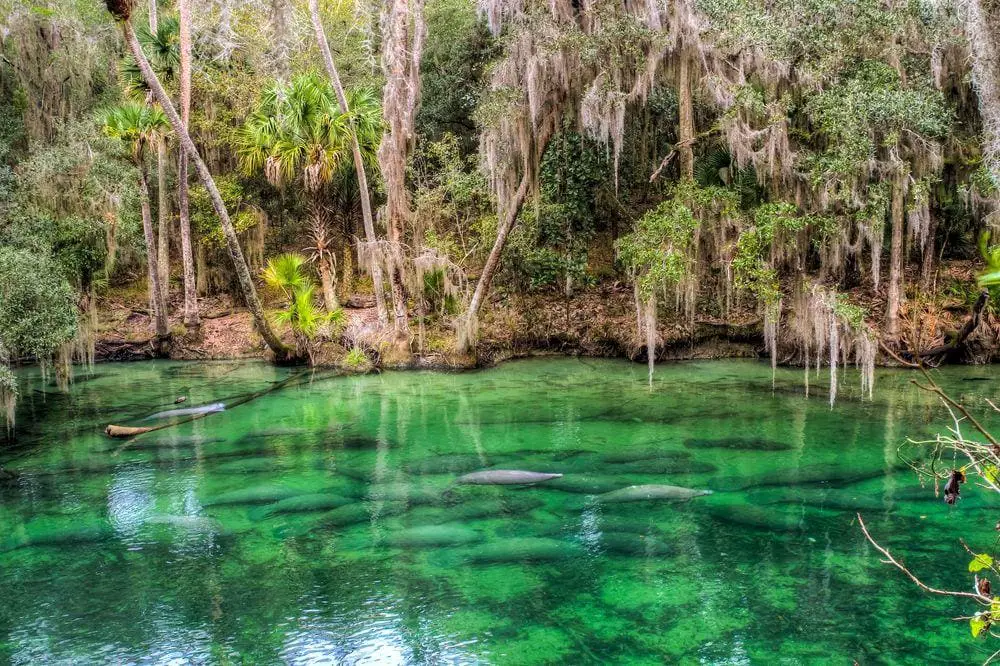
Rain0975, Flickr / CC BY-ND 2.0
 In short
In short
The giant Volusia Blue Spring is an unusual natural landmark. The deep blue-green basin over this spring seems to be cut with a knife – there is a deep fissure across the spring where lucid springwater gushes out. One can dive in this fissure up to 38 m deep!
 41.8%
41.8%
GPS coordinates
Location, address
Alternate names
Cave depth
Type
Average discharge
Map of the site
If you see this after your page is loaded completely, leafletJS files are missing.
 In detail
In detail
Description of Volusia Blue Spring
The basin above the fissure is some 6 meters deep – but nevertheless, there is seen a bulge and boil on the surface! Spring discharges from the Upper Floridan Aquifer, Middle and Upper Eocene limestone. The taste of water is salty, the temperature – 23 °C.
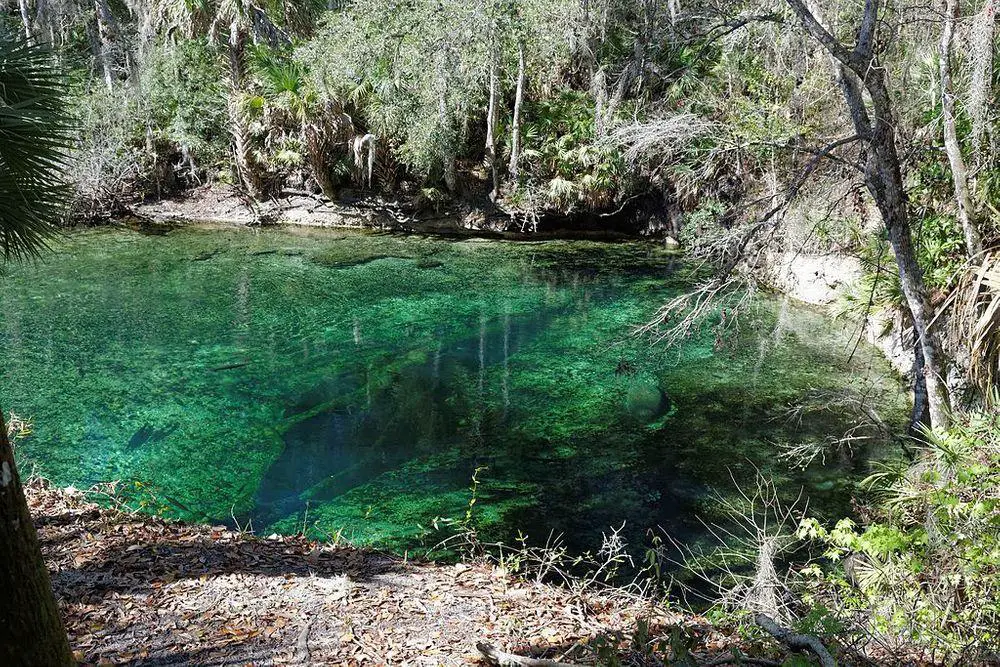
KimonBerlin, Wikimedia Commons / CC BY-SA 2.0
The spring forms a short river which after some 620 m falls in the Middle St. John River.
The area is very picturesque – banks of the spring are covered with virgin forest, there are limestone cliffs along the stream and in the middle – a stream with lucid, bluish water!
Manatees and snails
Volusia Blue Spring is the only place where lives Blue Spring hydrobe Aphaostracon asthenes – a small freshwater snail. Here have been observed also 32 species of fish, several species of turtles.
But the most noticeable animal here is the Florida manatee (Trichechus manatus latirostris). This is the main winter refuge for the population of Middle St. Johns River manatees whose number is increasing. If in the early 1970ies in the spring during the winter lived 11 manatees, in 2011-2012 their number increased to 400.
Nature conservation authorities have divided the spring run. The upper part, near the spring, is given to people. In holidays the spring is filled with swimmers, divers, snorkelers. But further down the stream comes the realm of manatees where people cannot swim. Only at the mouth of the spring run visitors are allowed to look at manatees in the water.
Environmental challenges
Both the increasing number of human visitors and manatees create water pollution in the spring run. There appear more and more filamentous algae (characteristic of polluted water), water clarity decreases.
Another worrying tendency is the decrease in water amount due to the increased pumping of the groundwater in the nearby cities. If in 1930 – 1980 the output was around 4,590 l/s, in 2007 – 2017 it was just 3,820 l/s.
References
- Volusia Blue Spring Restoration Plan, Executive Summary. Howard T. Odum Florida Springs Institute, May 2018. Last accessed on 14th June 2019.
- Volusia Blue Springs, Cave Atlas. Last accessed on 14th June 2019.
Volusia Blue Spring is included in the following article:
 Linked articles
Linked articles
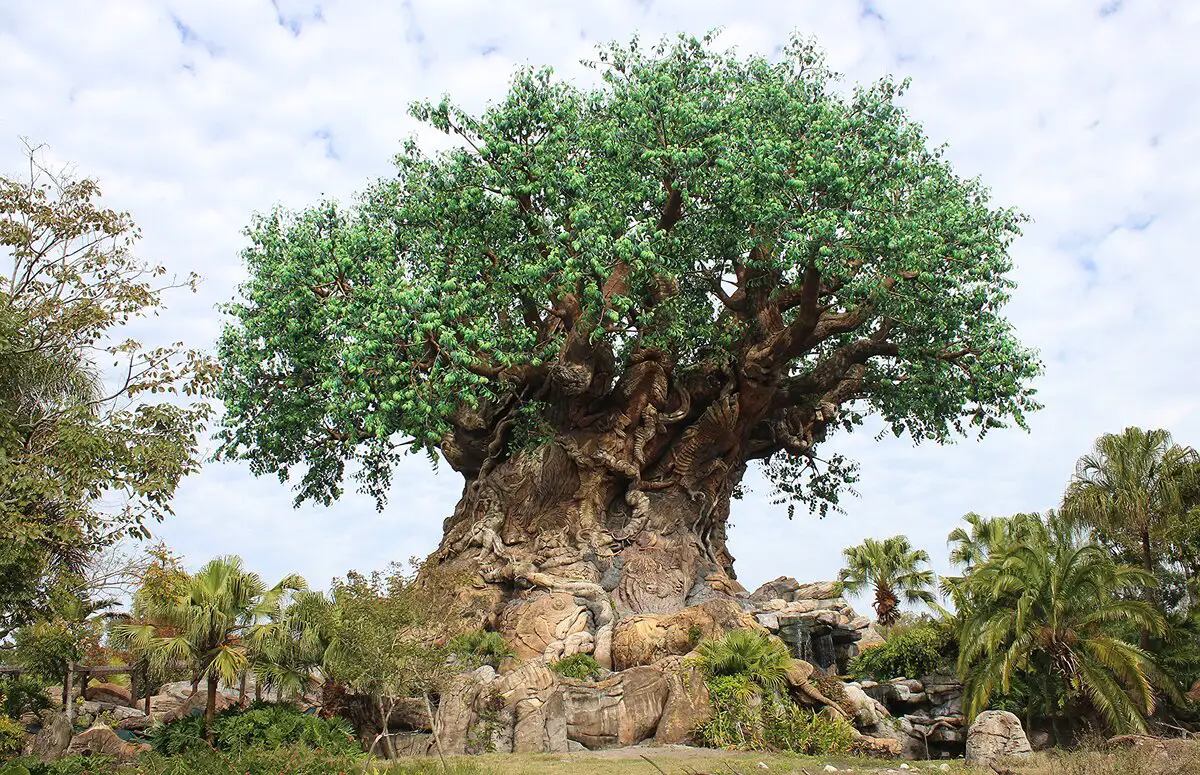
Wonders of Florida
Florida is the tropical paradise of the mainland United States. Over the last century, it has experienced fabulous changes, turning from a forgotten, swampy badland into a densely populated and rich land. Highlights of Florida include the architecture of the late 19th and 20th centuries as well as its giant springs and caves.
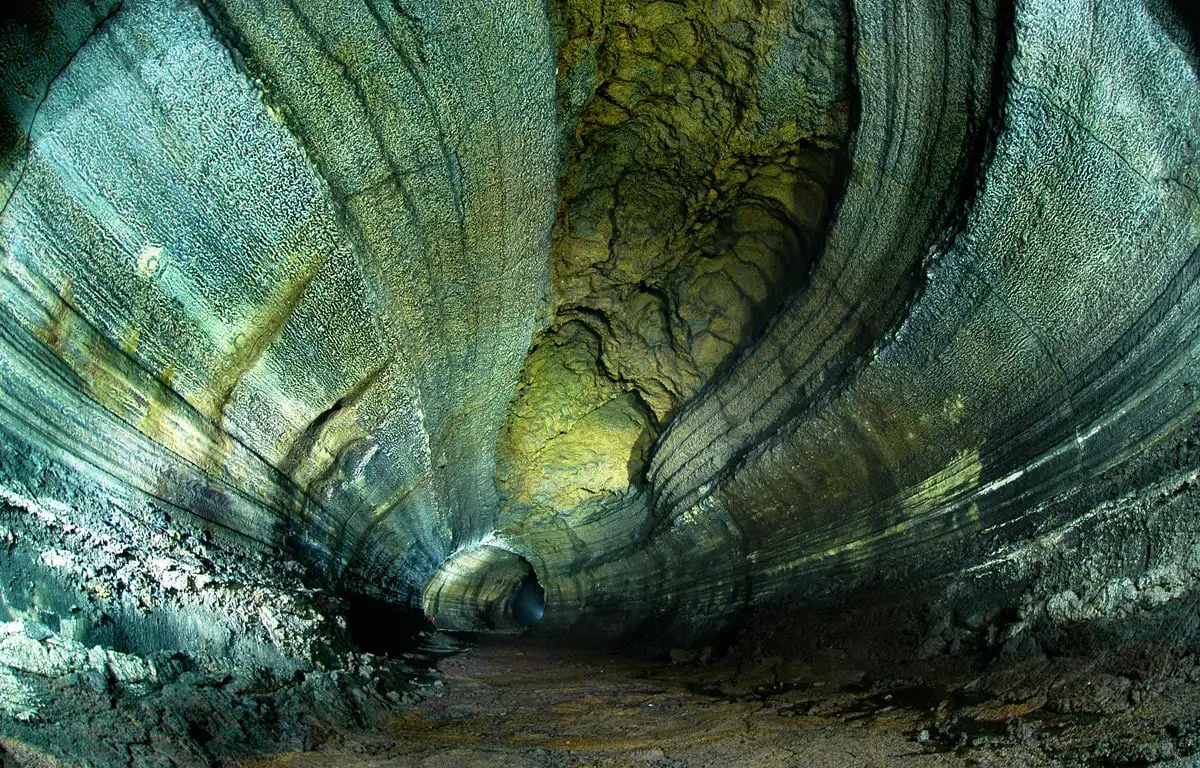
Caves
Every year there are reported exciting discoveries of new caves and discoveries of new qualities such as cave paintings in the ones known before. But there still is a feeling that our knowledge covers just a small part of all these monuments of nature.
Though, those which are known to us, offer a surprising diversity of unusual features and impressive sights.
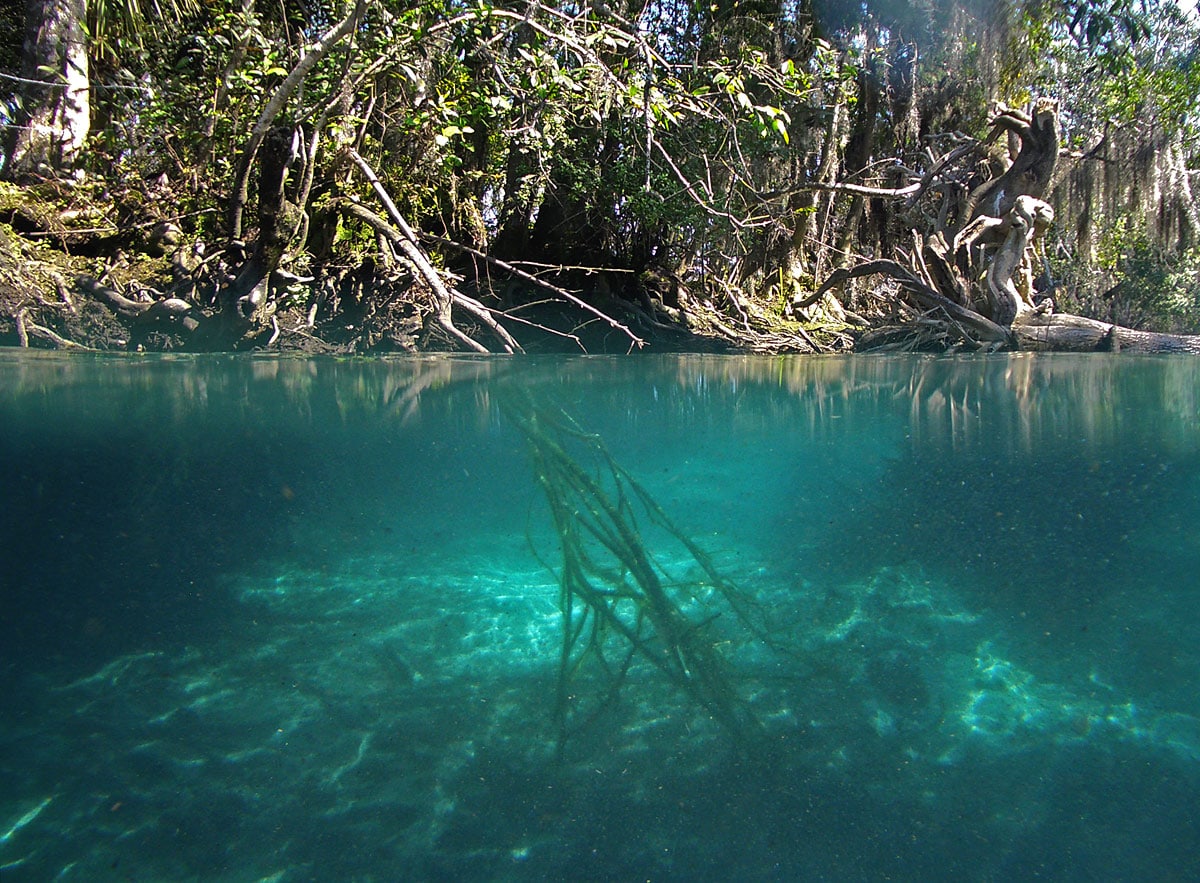
Springs
Powerful natural freshwater springs belong to the most fascinating monuments of nature. Even more exciting is the diversity of unusual springs – mineral springs, hot springs, submarine springs as well as the unusual black smokers. Especially beautiful are such natural rarities as travertine, silica, or salt terraces created by warm and hot springs and, especially, geysers.
 Recommended books
Recommended books
Florida’s Waters (Florida’s Natural Ecosystems and Native Species)
Taken from the earlier book Priceless Florida (and modified for a stand-alone book), this volume discusses the fresh- and saltwater systems of Florida, including lakes and ponds; rivers and streams; springs; aquatic caves; estuarine waters and seafloors; submarine meadows, sponge, rock, and reef communities; and the Gulf and the Atlantic Ocean. Introduces readers to the trees and plants, insects, mammals, reptiles, and other species that live in Florida’s unique water ecosystems, including a chicken turtle, barking treefrogs, osprey, herons, bass, crayfish, conchs, cordgrass, and railroad vine.
Florida Natural Wonders: 101 Slices Of Heaven That You Can’t Miss When Visiting Florida
Are You Ready for a Breathtaking Experience Through the Heart of Florida, Exploring Its Most Famous Wonders and Attractions?
If you want a guide that will help you find the most beautiful spots in this gorgeous state, then keep reading because this is the book you were looking for!

